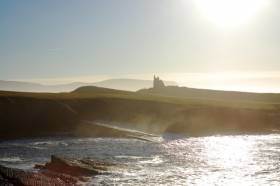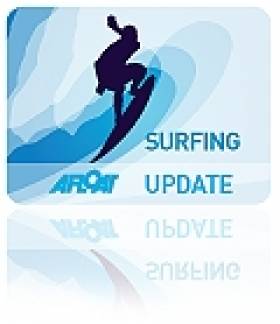Displaying items by tag: Tom Butler
Mullaghmore Big Wave Regular May Have Set New World Record In Portugal
#Surfing - A regular visitor to Ireland’s big wave surfing hot spots may have broken the world record for the biggest wave ever surfed, as The Irish Times reports.
Cornish surfer Tom Butler rode a giant swell at Nazaré in Portugal last Friday 14 December that was estimated by onlookers to be 30.5 meters high — more than six meters bigger than the previous record.
It follows previous unverified records claimed by German surfer Sebastian Steudtner earlier this year, and Irish-American surf pro Garret McNamara in 2012.
Butler will have to wait till April’s World Surf League Awards to see if he’s set a new bar, but on social media he said he was already “blown away” by the attention.
Previously, an image of Butler in the barrel of a cresting wave at Mullaghmore Head was notated for a Nomad Big Wave Award in 2016, and also made the front page of The Irish Times.
Mullaghmore Surfing Photo In The Running For Big Wave Award
#Surfing - A stunning photograph of Cornish surfer Tom Butler riding the swell at Mullaghmore Head was up for a top prize at the Nomad Big Wave Awards in Los Angeles this week.
The image of Butler – no stranger to Ireland's big wave scene – beneath a cresting wave netted a 'Best Shot of a Surfer in a Barrel' nomination for Irish-based South African photographer Ian Mitchinson at the inaugural awards, as the Cornish Guardian reports.
But Butler was "stoked" enough to see his spectacular shot make the front page of Monday's Irish Times, which reports on another big nomination for the Sligo swell as South African surfer Frank Solomon's attempt, filmed by Irish man Peter Clyne, is up for the 'Ride of the Year' gong.
The full list of award winners will be announced later today.
Top Surfers Tackle Biggest Rollers in Years Off Mullaghmore
#SURFING - It may have been too late for the postponed Tow-In Surf Session, but the big waves at Mullaghmore Head finally picked up this week - and some of the world's top surfers were there to take advantage of the swell.
As The Irish Times reports, an extreme weather system nicknamed the 'Viking storm' helped produced monster rollers on Thursday that are the biggest the area has seen in 15 years.
Devon surfer Andrew 'Cotty' Cotton rode the biggest wave when he tackled a 50ft giant, assisted by his Irish tow-in partner Al Mennie, while Brit boarder Tom Butler recorded the biggest barrel.
Richie Fitzgerald described the scene as "very calculated madness", noting that a safety crew was on hand as the 16-strong group took on the "huge, unruly and very dangerous swell".
The Irish Times has much more on the story, while Surfer Today has more video of the last winter swell at Mullaghmore Head HERE.































































